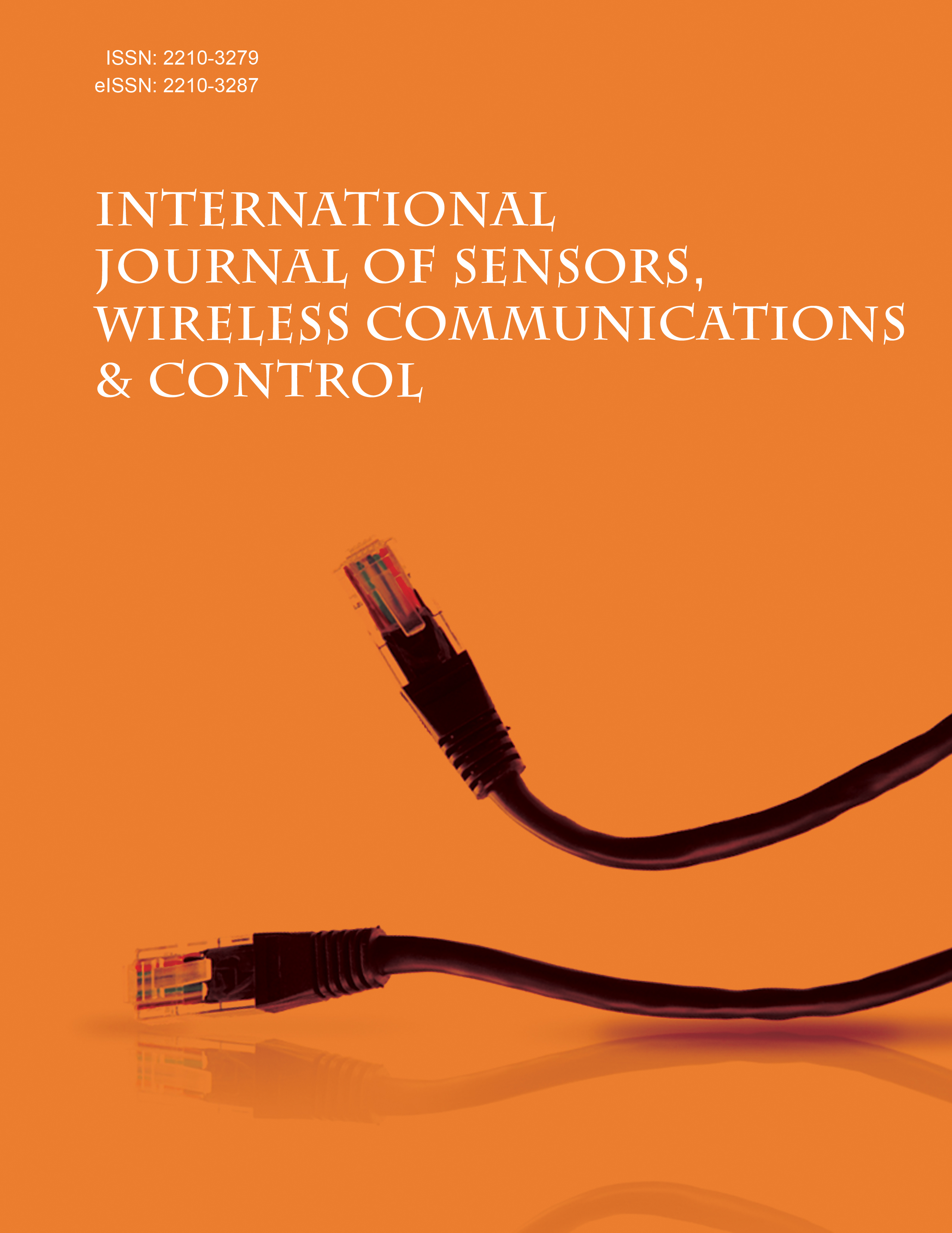- Home
- A-Z Publications
- International Journal of Sensors Wireless Communications and Control
- Previous Issues
- Volume 11, Issue 7, 2021
International Journal of Sensors Wireless Communications and Control - Volume 11, Issue 7, 2021
Volume 11, Issue 7, 2021
-
-
Virtual Private Network Flow Detection in Wireless Sensor Networks Using Machine Learning Techniques
More LessBackground: Every organization generally uses a VPN service individually to bypass the filters that hide the actual communication. Such communication filtration is not allowed by the organizational monitoring network. But these institutes are not in a position to spend a considerable amount of funds on a secure sockets layer to monitor traffic flow over their computer networks. Objective: Our work suggests a simple t Read More
-
-
-
Driver’s Drowsiness Detection Using Dlib and IoT
More LessBackground: Road accidents are a major cause of deaths worldwide. This is enormously due to fatigue, drowsiness, and microsleep of the drivers. This does not just risk the life of the driver and co-passengers but also a great threat to the vehicles and humans moving around that vehicle. Methods: Research, online content, and previously published papers related to drowsiness are reviewed. Using the facial landmarks in D Read More
-
-
-
CPU-based Prediction with Self Organizing Map in Dynamic Cloud Data Centers
More LessAuthors: Nabila Djennane, Meziane Yacoub, Rachida Aoudjit and Samia BouzefraneBackgroud: The major objective of resource management systems in the cloud environments is to assist providers in making consistent and cost-effective decisions related to dynamic resource allocation. However, because of the demand changes of the applications and the exponential evolution of the cloud, the resource management systems are constantly called into question with regard to their ability to guarantee ef Read More
-
-
-
Enhanced Shuffled Frog Leaping Algorithm with Modified Memeplexes
More LessAuthors: Tarun K. Sharma, Ajith Abraham and Jitendra RajpurohitAims: To design a new variant of the Shuffled Frog Leaping Algorithm in which memeplexes formation is modified with a new strategy. Background: Shuffled Frog Leaping (SFL) is a memetic meta-heuristic algorithm that inherits two other algorithms’ features. Its intensification component of search is similar to Particle Swarm Optimization, while the inspiration for diversification is inherited from the global exchange of informa Read More
-
-
-
A Network Science-Based Performance Improvement Model for the Airline Industry Using NetworkX
More LessBackground: COVID 19 created a challenging situation for many of the industries across the globe. Our primary focus is on the most affected airline industry. In this paper, the connectivity and profits of an airline company were analyzed with the theoretical approach and by proposing a novel model to increase the performance of the above parameters. In our previous work, two airlines were investigated, and it was observed t Read More
-
-
-
An Affordable, Scalable, Open Architecture, IoT Eco-system for the Academic Community
More LessAuthors: Anantha Radhanand, K. N. B. Kumar and Swetha NamburuAim: Today, Internet of Things (IoT) applications are extended from smart homes to ehealth, cyber security, data analytics, logistics and management of assets. There are many upcoming IOT solutions and platforms like ThingWorx, Xively, and Yaler. However, the existing eco-systems are not vibrant because of the high entry-level barrier and low potential for any stakeholder. Especially, the academic community requir Read More
-
-
-
Design and Implementation of an Optimal N-Edge Connected Networks for IOT Based Random Mesh
More LessIntroduction: In IOT, very few problems were solved by using optimal n-edge connected networks; however, this is the first attempt to increase the performance of IOT by optimal n-edge. The major focus of this study was to design an optimal edge connectivity because it plays an important role in the fault tolerance of a network. These models are designed by studying standard network models like Static, Generative, and Evolvin Read More
-
-
-
Internet of Things Based Stable Increased-throughput Multi-hop Protocol for Link Efficiency (IoT-SIMPLE) For Health Monitoring Using Wireless Body Area Networks
More LessAuthors: Arun K. Rana and Sharad SharmaAims: This study aimed to propose a routing protocol for IoT-based WBANs that is reliable, power-efficient, and has a high throughput. Background: A variety of services and applications that use wireless connections such as LTE, 3G, Wi-Fi, Bluetooth, and ZigBee communication technologies have become popular in daily life as a result of the rapid development of network hardware technology. Remote medical monitoring and care Read More
-
Most Read This Month
Article
content/journals/swcc
Journal
10
5
false
en


